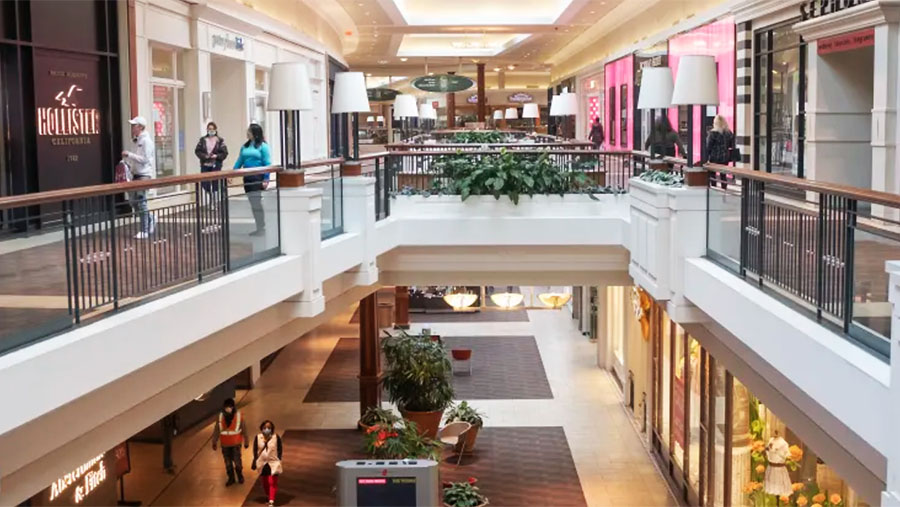In an update to prior research, UBS said it is now projecting between 40,000 to 50,000 retail stores in the U.S. will close over the next five years, down from the 80,000 closures it previously forecasted.
The initial closure forecast was made in April 2021.
“There’s no question that the pandemic has been disruptive in many ways. Yet, it’s also brought a slowdown to the disruption that has been plaguing retail (there have been 5,000 net store openings in the last few quarters),” wrote UBS retail analyst Michael Lasser in the report. “Still, we think store rationalization will continue moving forward.”
The investment firm’s estimated 40,000 to 50,000 stores closures over the next five years represent between 4.5 percent to 5.7 percent of the estimated 880,000 total retail stores in the U.S. at the close of the 2021 third quarter.
The forecast also assumes retail sales will grow 4 percent, in line with the 2002 to 2020 average. UBS also forecasted that e-commerce will grow from 18 percent in FY21 to 25 percent by FY26. Under the prior forecast, e-commerce was expected to reach 27 percent of total retail sales, up from 18 percent expected for 2021.
Lasser cited three reasons for the reduced forecast for store closures:
- Inflation rises: “Retail sales growth has been, and will probably be, strong for the near future due, in part, to rapid inflation. Retailers recognize sales in nominal dollars so this provides support even as costs are growing rapidly, too.”
- E-commerce growth moderates: “e-commerce penetration actually took a step back in 2021, going from 17.9 percent in 2020 to 17.5 percent in 2021. Penetration has increased only modestly this year, rising 40 bps versus 100 bps annual increase from 2015 to 2019.”
- Stores show their benefit: “Stores have proven their critical role. They are attractive tools for acquiring and interacting with customers. They provide logistics support. They serve as hubs of fulfillment. They are important sources of data. Their importance will persist. We have assumed that 25 percent of online sales will be fulfilled by stores. It could be higher than this. Still, e-commerce penetration will likely drift higher over the next few years, especially as innovations like social commerce, virtual reality and automation/robotics rapidly advance.”
Still, UBS sees 40,000-to-50,000 stores closing.
At what UBS sees as the “necessary” closing rate of 40,000 to support rationalization, the hardest hit retail sector is expected to be office supplies, expected to close 2,380 stores by the calendar year 2026, or 34 percent of its store base of 6,908 at the close of the third quarter.
The consumer electronics retail channel is expected to close 7,570 locations or 17 percent of its store base of 43,439.
In the sporting goods channel, 2,380 stores are expected to close over the next five years, or 11 percent of its store base of 22,579 at the close of the third quarter.
Most store closings are in the massive clothing and accessories channels with 12,860 projected to shutter. Similar to the sporting goods channel, the figure represents 11 percent of clothing’s overall store base of 116,188.
The home furnishings sector is expected to lose 7 percent of its store base, and the home improvement channel is expected to shutter 1 percent of its store base.
The grocery retail store count is expected to remain around the same as the general merchandise channel, which includes Walmart, Target and Dollar stores. Auto parts stores are projected to show small gains in door count.
UBS estimated that stores in enclosed malls could account for nearly half of the closures forecasted under the assumption that 10-to-20 percent are closed or redeveloped. UBS estimated there are about 80,000-to-100,000 retail stores across 1150 enclosed malls in the U.S.
“Shopping centers are likely better positioned,” said Lasser. “Coming through the pandemic, sentiment on the relevance of physical retail was probably as good as it has been in over a decade. The potential for future store closings could bring back prior narratives that have weighed on retail REIT sentiment in the past.”
In the apparel category, UBS believes consumers’ migration to online purchases will continue even after outsized digital sales growth during the pandemic. The firm estimates that online sales in the clothing category will reach 45 percent by FY26, up from 35 percent in FY21. Lasser wrote, “We think retailers with high leverage to shopping malls will continue closing stores. Within Softline players, we expect department stores and specialty retailers will remain net store closers, while off-price retailers should grow units.”
Photo courtesy Getty
















